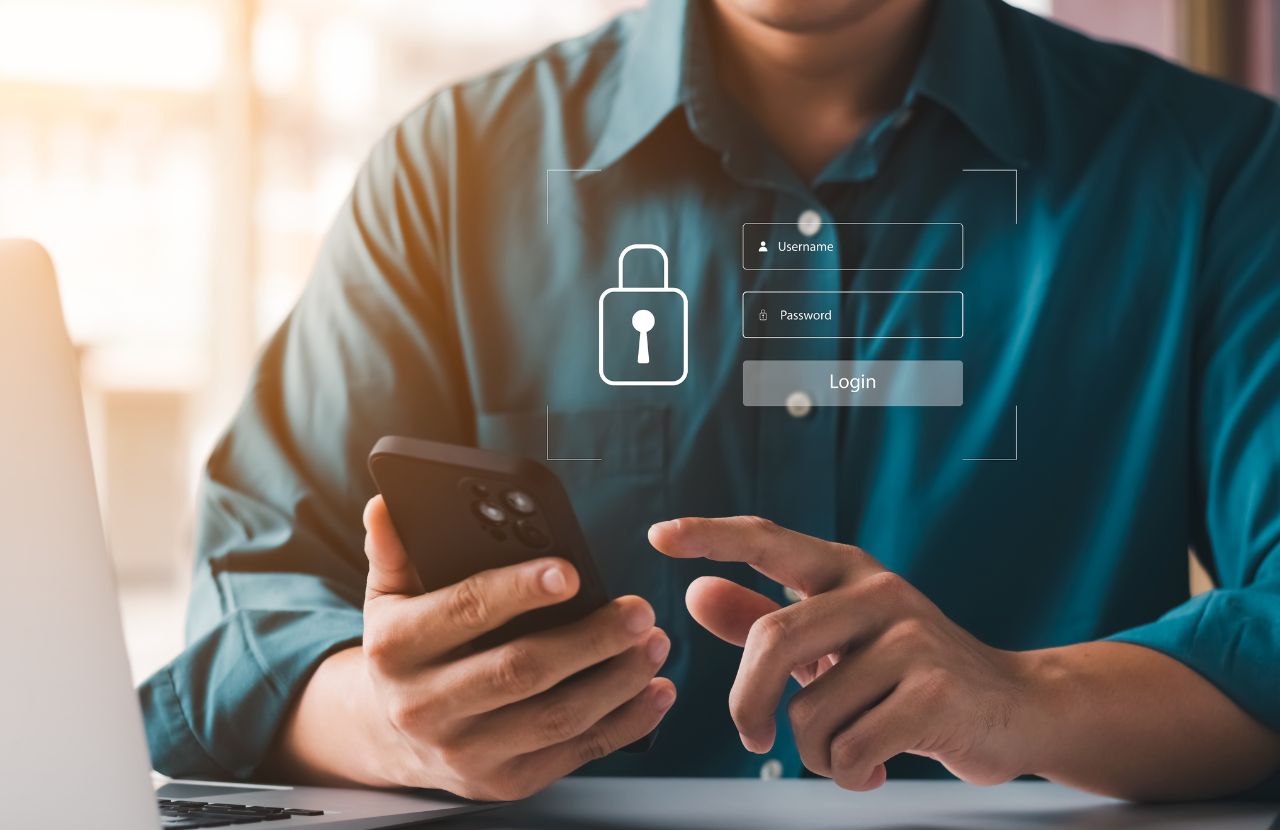
With remote and hybrid working becoming increasingly common, especially with the introduction of the Flexible Working Bill, organisations need to ensure their employees can access company resources securely from any location. Secure remote access is essential to protect sensitive data and maintain operational efficiency.
This guide is a starting point to help you understand how to implement robust remote access security for your organisation.
What is secure remote access?
Secure remote access refers to the methods and technologies that enable employees to connect to an organisations network and resources from remote locations securely. This includes accessing emails, files, applications, and internal websites while ensuring that the data remains protected from unauthorised access and cyber threats.
Key components of remote access security are:
- Virtual private network (VPN)
- Multi-factor authentication (MFA)
- Secure access service edge (SASE)
- Zero trust architecture.
Virtual private network (VPN)
A virtual private network (VPN) is designed to encrypt internet connections, providing secure access to an organisation’s network. By encrypting data transmitted between the remote user and the corporate network, VPNs prevent unauthorised parties from intercepting and reading sensitive information.
There are different types of VPNs, and these are:
- Site-to-site VPN: Connects entire networks to each other. It is normally used to link branch offices with the main office network. Data travels securely between the sites as if they were part of the same local network.
- Remote access VPN: Allows individual users to connect to an organisation’s network from remote locations. This is ideal for employees working from home or while travelling.
- SSL VPN: Utilises secure sockets layer (SSL) encryption, providing secure access through a web browser without needing specialised client software. SSL VPN is especially user-friendly and flexible for different devices.
Top tips:
- Employ robust encryption standards like IPsec to ensure data integrity and confidentiality.
- Regularly update VPN software to patch vulnerabilities and improve security features.
- Make sure multi-factor authentication (MFA) is required for VPN access to add an additional layer of security.
Multi-factor authentication (MFA)
Multi-factor authentication (MFA) enhances security by requiring two or more verification methods before granting access. This significantly reduces the likelihood of unauthorised access, even if one factor (like a password) is compromised.
MFA can be conducted through any of these methods:
- SMS codes: Users receive a one-time code via SMS, which they must enter along with their password.
- Authentication apps: Apps like Google Authenticator generate time-based one-time passwords (TOTP) that users enter in addition to their primary credentials.
- Biometrics: Utilises unique biological traits, such as fingerprints, facial recognition, or retinal scans, to verify identity.
Top tips:
- Ensure MFA is required for all systems and services accessed remotely to enhance security.
- Continuously improve and update authentication processes to protect against emerging threats and vulnerabilities.
Secure access service edge (SASE)
Secure access service edge (SASE) integrates network security functions with wide area network (WAN) capabilities, providing secure and efficient access to cloud-based resources and services.
SASE combines different security technologies into a single, unified framework.
These are the components of SASE:
- Firewall-as-a-service (FWaaS): Delivers firewall capabilities as a cloud service, protecting against network threats without the need for on-premises hardware.
- Secure web gateway: Protects users from web-based threats by filtering malicious internet traffic and enforcing security policies.
- Cloud access security broker (CASB): Monitors and controls cloud application usage to ensure compliance with security policies.
- Zero-trust network access (ZTNA): Provides secure access to applications and services based on strict identity verification and continuous monitoring.
Top tips:
- Integrate SASE across the organisation’s network for comprehensive security.
- Maintain consistent security policies and controls for all users, devices, and locations.
Zero trust architecture
Zero trust architecture follows the principle of ‘never trust, always verify’. It assumes that no entity, whether inside or outside the network, should be trusted by default. Every access request must be authenticated and authorised based on strict verification processes.
These are the components of zero trust architecture:
- Identity and access management (IAM): Manages user identities and their access to resources, ensuring that only authorised individuals can access specific data and applications.
- Network segmentation: Divides the network into smaller segments to contain and limit the impact of security breaches, preventing lateral movement of threats.
- Continuous monitoring: Continuously observes network activity to detect and respond to anomalies and potential security incidents in real time.
Top tips:
- Grant users the minimum level of access necessary to perform their duties, reducing the potential impact of compromised accounts.
- Use advanced monitoring tools and analytics to detect unusual behaviour and respond promptly to security threats.
What are best practices for a secure remote workforce?
These are some best practices to follow to help ensure remote access security.
Provide cyber security training
Regular cyber security training is essential to educate employees about potential cyber threats and secure practices. As cyber threats evolve, continuous education helps employees stay informed and vigilant against new attacks.
At Praxis42, we offer cyber security awareness training for employees and cyber security training for managers. These courses help staff to prevent and identify cyber-attacks and understand the importance of reporting cyber-attacks.
Since most cyber-attacks are due to employees not identifying the signs of attacks or acting quickly enough following an incident, comprehensive training is essential. Employee training is a small investment that can significantly reduce the costs of data breaches, potentially saving your organisation thousands of pounds.
Training on identifying and avoiding phishing attempts is crucial, as 90% of data breaches start with phishing. Employees should also understand secure password practices, how to avoid malicious websites and reduce malware risks.
Implement endpoint security
Endpoint security aims to protect devices used by remote employees from cyber threats, ensuring the integrity and security of corporate data. ‘Endpoints’ are devices such as laptops, iPads and desktop computers.
Endpoint security is delivered through:
- Anti-virus software: Detects and removes malicious software.
- Endpoint detection and response (EDR): Provides real-time monitoring and response to advanced threats.
- Device encryption: Ensures data is unreadable to unauthorised users if a device is lost or stolen.
Employees should understand the importance of allowing regular updates and patches to protect against new and emerging threats.
Data should be encrypted when a device is not in use or is in transit to prevent unauthorised access.
Moreover, if a device is lost or stolen, IT professionals should be permitted to erase data to protect sensitive information.
Restrict access
Access controls restrict access to resources based on user roles and responsibilities, minimising the risk of unauthorised access and data breaches.
Types of access controls are:
- Role-based access control (RBAC): Assigns permissions based on the user’s role within the organisation.
- Attribute-based access control (ABAC): Uses attributes like time of day, location, and type of device to make access decisions.
It is important to regularly review and update access permissions to ensure they align with current job roles and responsibilities. The process of granting, modifying, and revoking access can be automated to reduce human error and improve efficiency.
Use secure collaboration tools
Secure collaboration tools ensure that communication and data sharing among remote employees are protected from eavesdropping and interception. This is important because a significant number of data breaches happen through collaboration tools.
Examples of secure collaboration tools are encrypted messaging apps and secure file-sharing platforms.
All collaboration tools should be kept up to date to protect against current cyber security threats.
How to implement secure remote access
A secure remote access environment can be achieved by taking a structured approach. Here is a detailed breakdown of each step (please also see our webinar, How to Implement a Successful Cyber Security Plan):
1. Assess current security
- List all hardware, software, and data assets to understand what needs protection.
- Review current security controls such as firewalls, intrusion prevention systems, anti-virus software, and data encryption.
- Evaluate the potential impact of identified vulnerabilities and prioritise the actions based on the level of risk.
- Check for compliance with relevant regulations and standards, such as GDPR or ISO 27001.
2. Develop a remote access policy
A remote access policy may cover the following:
- Who can access what resources remotely and under what conditions.
- The authentication methods required for remote access, such as passwords, MFA, or biometrics.
- The types of devices approved for remote access (for example, company-owned, or employees’ own devices with certain security features).
- Requirements for device security, such as mandatory anti-virus software, firewalls, and encryption.
- How sensitive data should be accessed, transmitted, and stored. This includes guidelines on data encryption and secure file sharing.
- A clear incident response plan that outlines the steps to be taken in the event of a security breach, including reporting procedures and mitigation strategies.
3. Deploy security technologies
Implement necessary security technologies such as VPNs, MFA and endpoint security solutions, and integrated advanced security frameworks like SASE and zero trust (see above).
4. Ensure continuous monitoring
Through continuous monitoring and improvement, you can protect your organisation against current cyber security threats.
Use tools to continuously monitor network traffic for suspicious activities and potential threats. Regularly review logs from firewalls, intrusion prevention systems, and other security devices.
5. Detect and respond to threats in real time
Employ SIEM solutions to aggregate and analyse log data in real-time. Use machine learning algorithms to identify anomalies and predict potential threats.
6. Adapt to evolving threats
Regularly apply patches and updates to software and hardware to address security vulnerabilities. Stay informed about emerging threats and adjust security measures accordingly.
Cyber security training for employees – protect your organisation
Secure remote access is critical for maintaining the integrity and confidentiality of your organisation’s precious data and resources. By implementing robust remote access security measures and following best practices your organisation can ensure a secure remote workforce.
Regular training for employees is essential to protect your organisation’s assets against current cyber threats. Find out about our online cyber security courses and get access to free our webinars, podcasts and guides to support your organisation.

Tom Paxman
Managing Director (Digital)
